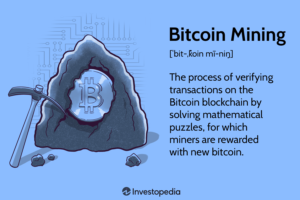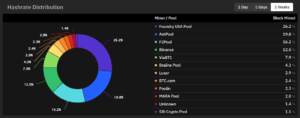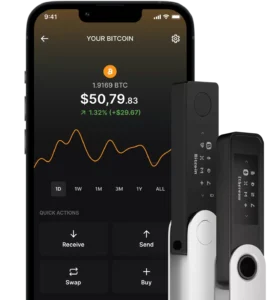How to Mine Bitcoin: A Step-by-Step Guide
Bitcoin mining is a crucial process that maintains the security and integrity of the Bitcoin network. It involves solving complex mathematical problems to validate transactions and add them to the blockchain. In this guide, we’ll walk you through the essential steps to get started with Bitcoin mining.
1. Understand Bitcoin Mining
Before diving into the technical aspects, it’s essential to understand what Bitcoin mining is and how it works. Bitcoin mining involves using specialized computer hardware to solve cryptographic puzzles. Miners are rewarded with new bitcoins for successfully solving these puzzles and adding a new block to the blockchain.

2. Choose the Right Hardware
Bitcoin mining requires powerful hardware to be effective. There are mainly two types of mining hardware:
ASIC Miners (Application-Specific Integrated Circuits)
- Description: ASIC miners are specifically designed for Bitcoin mining and offer high efficiency and performance.
- Examples: Antminer S19, Bitmain Antminer S9.
GPU Miners (Graphics Processing Units)
- Description: Although less efficient than ASICs for Bitcoin, GPUs are versatile and can mine other cryptocurrencies.
- Examples: NVIDIA GeForce RTX 3080, AMD Radeon RX 6800.

3. Select a Mining Pool
Mining Bitcoin solo can be challenging and time-consuming due to the high competition. Joining a mining pool can increase your chances of earning rewards. A mining pool is a group of miners who combine their computational power to solve blocks more efficiently.
Popular Mining Pools:
- Antpool
- F2Pool
- Slush Pool

4. Set Up a Bitcoin Wallet
Before you start mining, you need a Bitcoin wallet to receive your earnings. There are several types of wallets to choose from:
Types of Wallets:
- Software Wallets: Applications or programs that you install on your computer or mobile device.
- Hardware Wallets: Physical devices that store your private keys offline for added security.
- Web Wallets: Online services that store your bitcoins on their servers.

5. Install Mining Software
Once you have your hardware and wallet set up, you need mining software to start the mining process. This software connects your mining hardware to the Bitcoin network and mining pool.
Popular Mining Software:
- CGMiner
- BFGMiner
- NiceHash
6. Configure Your Mining Equipment
Configure your mining software to connect to your chosen mining pool and Bitcoin wallet. This involves entering details such as the mining pool’s address, your wallet address, and other settings.
Configuration Steps:
- Download and Install Mining Software: Follow the instructions provided by the software’s developer.
- Configure the Software: Enter your mining pool information and wallet address.
- Start Mining: Launch the software to begin the mining process.
7. Monitor Your Mining Operation
After setting up, monitor your mining operation to ensure everything is running smoothly. Check for any issues with your hardware or software and track your mining performance and earnings.
Monitoring Tools:
- Mining Pool Dashboard: Most pools provide a dashboard to monitor your mining performance.
- Hardware Monitoring Software: Tools to track the temperature and performance of your mining hardware.
8. Optimize Your Mining Setup
To maximize your profits, consider optimizing your mining setup. This may involve adjusting your hardware settings, overclocking your equipment, or improving cooling solutions to prevent overheating.
Optimization Tips:
- Adjust Power Settings: Fine-tune your hardware’s power settings for better efficiency.
- Improve Cooling: Use additional cooling solutions to keep your equipment from overheating.
- Upgrade Hardware: Consider upgrading to more efficient mining hardware if necessary.
Conclusion
Bitcoin mining can be a rewarding endeavor if approached correctly. By following these steps and continually optimizing your setup, you can increase your chances of earning rewards and contributing to the Bitcoin network. Remember that mining requires a significant investment in hardware and electricity, so carefully evaluate the costs and benefits before diving in.


Post Comment